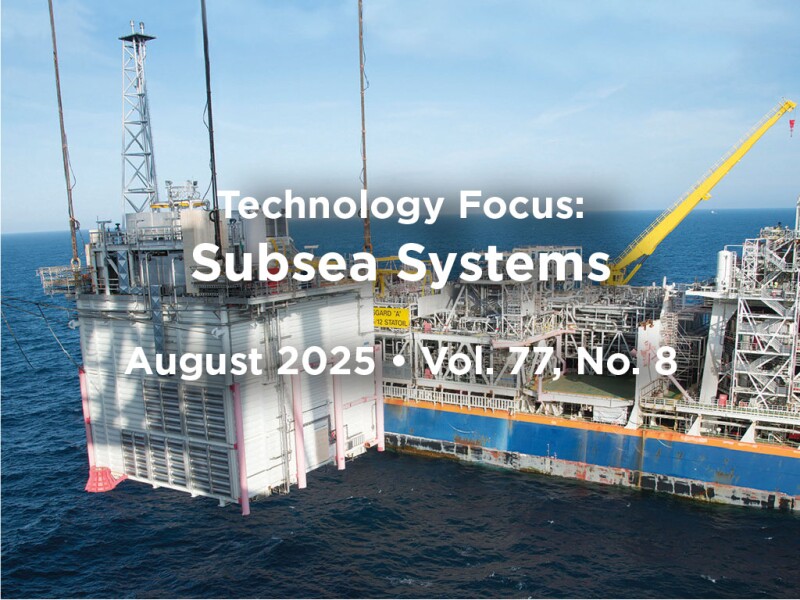From a broader and high-level perspective—considering importance, impact, significance, and criticality—subsea systems and advanced offshore engineering play an essential role in the planning and execution of world-class deepwater major capital projects, overcoming associated multidimensional offshore challenges and risks in both full-field development and brownfield life extension.
Vision in subsea projects is crucial to determine project goals and plan strategies. Also, defining specific, measurable, achievable, realistic, and timely goals and strategic objectives is the way to deliver the project within approved scope and budget.
Human capital management plays a significant role in forming talented multidisciplinary engineering and management teams with the right skills, knowledge, capability, and expertise to achieve excellence.
Effective management of project elements consists of outstanding geoscience knowledge; project integration between subsurface, subsea, offshore, and marine aspects; strategy; project performance; and impact.
Developing innovation has resulted in cutting-edge design solutions and applications, such as:
- Using high-strength steel in catenary risers to reduce wall thickness while maintaining structural integrity
- Using advanced composite materials with advantages of high strength-to-weight ratio and resistance to corrosion
- Using advanced design tools such as computer-aided design for generating detailed 3D models, integrated with computer-aided engineering software for simulation and analysis
These are behind both the accuracy of subsea installations and significantly enhanced constructability as a powerful tool in subsea projects. Early input helps visualize the subsea construction in different design stages and identify any potential clashes between different systems. It has led to several advantages, for example producing fit-for-purpose engineering designs and installation techniques and producing new subsea technology, such as subsea multiphase pumping, subsea blowout-preventer digital twins, full electric subsea trees, subsea compression technology, and autonomous underwater vehicles for subsea intervention.
Integrated logistics and supply-chain management provide the ability to mitigate the risks of fabrication, towing, and installation of floating production facilities.
Engineering, procurement, construction and installation is the backbone of the project; therefore, selecting the right contractor is a priority.
The drilling program must be performed safely and efficiently, considering technical and business risks, lessons learned from global industry, and the deployment of the latest technology.
Robust quality control and assurance is crucial to meeting stringent industry standards, including the establishment of effective quality-control gates and the implementation of verification, validation, fitness, inspection, and test plans.
Efficiency and sustainability are key pillars to achieve long-term project success. Therefore, the principles of managing resources, minimizing environmental impact, optimizing manufacturing processes, and designing projects with a focus on long-term viability, digitalization, asset integrity, maintenance, decarbonization, operational excellence, and decommissioning planning must be considered.
Full compliance with regulatory requirements should include design codes, best practices, a strong commitment to safety standards, and meeting safety regulations to secure the operational license.
Summarized Papers in This August 2025 Issue
OTC 35303 Best Practices and Lessons Learned From Deepwater Floating Production Unit Project by James M. Reiners, Chevron, et al.
OTC 35242 Subsea Tiebacks Drive Growth in Bonga North Field, Deepwater Nigeria by Areje Adegoke, Shell, et al.
OTC 35773 Fast-Track Innovation Enables Life Extension of Ormen Lange Gas Field by Joakim Almqvist, SLB, et al.
Recommended Additional Reading
OTC 35798 Subsea Compression—Åsgard and Beyond by P.E. Hedne, Equinor, et al.
OTC 35656 Reliability and Predictability Matters: Atlanta SPS and SURF as a Whole by M.B. Oliveira, Enauta Energia, et al.
SPE 223796 Implementation of EVXT at Equinor’s Fram SØR Project by T.G. Wernø, Equinor, et al.
OTC 35905 Application of a Multiphase Flow Simulator for Production Optimization of Tiebacks Using Subsea Multiphase Pumping by I. Fernandes, Texas A&M University, et al.
IPTC 24783 The Emergence of the Subsea BOP Digital Twin Using Process Safety Management and Big Data by Mark Siegmund, Aquila Engineering, et al.

Ibrahim Fahmy Abdelaty, SPE, is a visiting professor at the Naval Architecture, Ocean, and Marine Engineering Department of the University of Strathclyde. He holds a BS degree in marine engineering and naval architecture from Alexandria University. Abdelaty has 25 years of experience, including several senior roles at technical, business, advisory, and management levels. He has served on the International Petroleum Technology Conference Award Committee since 2014 and was an executive committee member for Offshore Europe 2023. Abdelaty has been chairman or speaker at 100 technical and panel sessions organized by SPE and other organizations in the past 11 years and serves on the JPT Editorial Review Board.

